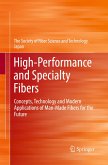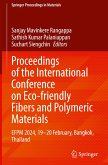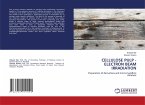The initial impetus for this book on ?bers originated from a weeklong s- posium where scientists of a variety of walks met to discuss their work on ?bers with medical and specialty applications. Seeing the bene?ts of sharing information across disparate ?elds and disciplines of science we realized the potential for cross-fertilization of ideas between different area of ?ber science. Thus, represented here are a variety of potential product lines under the cover of a single book, which for the imaginative scientist we hope will lead to some new food for thought. The ?elds of medical and specialty ?bers include a wide array of naturalandsynthetic textiles,medicaldevices,andspecialtypaperand wood products. Research in these areas has become more interesting to s- entists who are seeking to strike out in new directions based on an impulse to createnewproductsthatmeettheunmetneedsofrapidlygrowing?bermarkets in wound care, prosthetic, and cellulosic arenas. It is hoped that providing new concepts and approaches to working with different types of ?brous materials willgivethereadersomepulseofthecurrentclimateandresearchopportunities of medical and specialty ?bers. Breakthroughs into a better understanding of wound healing, biomaterial design, ?ber surface chemistry and bio- and na- technologies are currently providing the impetus to create the ?ber products of the future. The editors feel that a book of this type would be remiss wi- out discussions of the impact interdisciplinary scienti?c pursuits are having on ?ber design.
From the reviews: "Modified Fibers with Medical and Specialty Applications is comprised of fourteen chapters, each of each is a valuable gem in its own right. ... it is an inviting introduction to the importance of modified fibers. The book is a useful tool for students and researchers ... . The book is also well worth the attention of many more than this audience. ... a significant service for those establishing workshops introducing current concepts in fibers, for textile undergraduate courses, as well as for professional seminars." (Current Engineering Practice, 2007)








